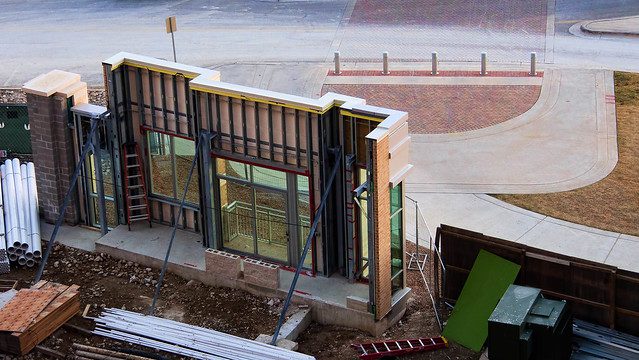
Like many other American cities, Austin, Texas, is in the midst of a housing crisis. Much of this crisis can be attributed to self-imposed overregulation of the housing market and, certainly in Austin’s case, an outdated land development code (LDC) that does not allow for responsible land development.
Austin’s city council is currently working through a rewrite of the LDC, but it’s a big project, and the rewrite will take time (seven years, so far).
And so, while we wait for the code rewrite, and in light of the recent passage of a $250 million affordable housing bond, council members from Districts 1, 2, and 3—led by District 4’s Greg Casar—asked the city’s housing community what can be done now to start adding much-needed affordable housing with the best access to things like transit, fresh food, robust employment centers, and parks, to one of our biggest gaps: income-restricted affordable housing serving income earners who earn 60 percent median family income (MFI) or below for 40 years for rental and under 80 percent MFI for 99 years for ownership.
When the Austin Housing Coalition, HousingWorks, and many other local nonprofits put their heads together to consider ways to remove barriers to building affordable homes, one idea started to gain traction. By targeting and incentivizing builders who would agree to dedicate 50 percent or more of each development to affordable housing, we could remove the red tape that severely limits what’s allowed to be built in exchange for the affordable homes.
The housing community, along with our champions on the city council, landed on an ordinance that establishes a voluntary residential affordable housing development bonus program. If an applicant wants to participate in the program, the proposed development must provide income-restricted units and meet certain other criteria. If a proposed development qualifies, it will receive waivers related to height, setbacks, compatibility standards (a suburban-oriented local regulation that costs us more housing units than any other rule on the books), parking requirements, and other things. The proposed development will also qualify for modifications related to density and front- and backyard setbacks. We named it “Affordability Unlocked.”
Today, our city’s capacity to enact real solutions and think boldly about affordable housing is hamstrung by red tape and onerous zoning rules, thanks in particular to our outdated LDC. We need to unlock our potential to make every Austinite’s dollar go further and make it easier for those trying to build affordable housing to think bigger. People are languishing on long, multi-year waiting lists for affordable units while market prices continue to rise, making it increasingly unlikely that they’ll ever find an affordable place to live. Organizations that want to build that much-needed housing are waiting for local leaders to make it easier—or even possible at all—for them to build more.
There are countless examples of affordable housing developments that have had to cut out many desperately needed units in order to comply with the gymnastics required to build in Austin. Here are just a few:
- LifeWorks, an organization that serves homeless youth and single mothers exiting foster care, lost 25 homes due to compatibility issues and a requirement to build 45 additional parking spaces that they did not need.
- Foundation Communities’ Bluebonnet Studios is a 107-unit rental development for single adults earning 30 to 50 percent MFI, with six permanent supportive housing units. The development lost 42 units due to height restraints, despite it being on a major corridor with high-frequency transit.
- Jeremiah Program Moody Campus, which includes 35 two-bedroom rental units for single mothers and their children earning, on average, 30 percent below MFI, is just feet away from Austin Community College. The campus was severely constrained and lost units due to compatibility requirements.
Our own organization, Austin Habitat for Humanity, has owned a commercial property for over two decades. When our transit agency, Capital Metro, placed a commuter train station just 100 feet away from the property and the area was zoned for Transit-Oriented Development, we were shocked to learn that we could only build 19 one-bedroom homes, and that was if we went with underground parking, which completely prevented us from building anything affordably. After three years of working with the community and with the city council, we are now planning 57 homes on the property, one-third of which will be two- and three-bedroom residences. Had Austin had “Affordability Unlocked,” this community could have opened years ago with predictability and without politics and delay.
“Affordability Unlocked” is the solution that will allow Austin to do the most with our precious housing dollars, limited available land, and sky-high demand, and we are glad our city council is taking steps to free things up for people who need affordable housing most.
[RELATED ARTICLE: What Is NIMBYism and How Do Affordable Housing Developers Respond to It?]
The resolution to initiate “Affordability Unlocked” passed unanimously and is now going through the review process. It is set to come back to city council for final passage this week, on May 9. “Affordability Unlocked” will allow affordable housing builders to do more with land than they otherwise could. By allowing for greater height, waiving parking requirements, relaxing setback and site area requirements, as well as removing other limiting factors meant to protect the physical character of places at the expense of affordability, this ordinance will allow affordable homes to be built in areas that have long prevented low- and middle-income earners from gaining a toehold.
This past November, when they approved $250 million for affordable housing, Austin voters gave the city a clear mandate: It’s time for Austin to think differently about solutions to our affordable housing crisis. “Affordability Unlocked” is a first step.




Comments